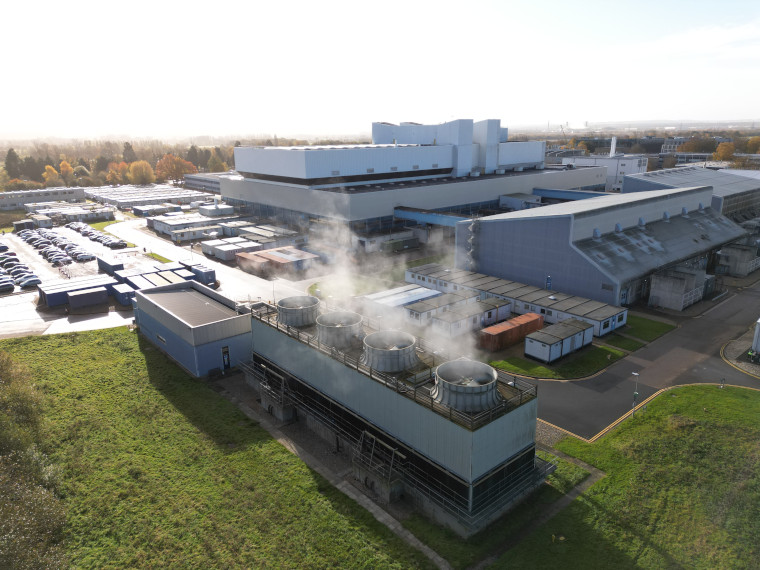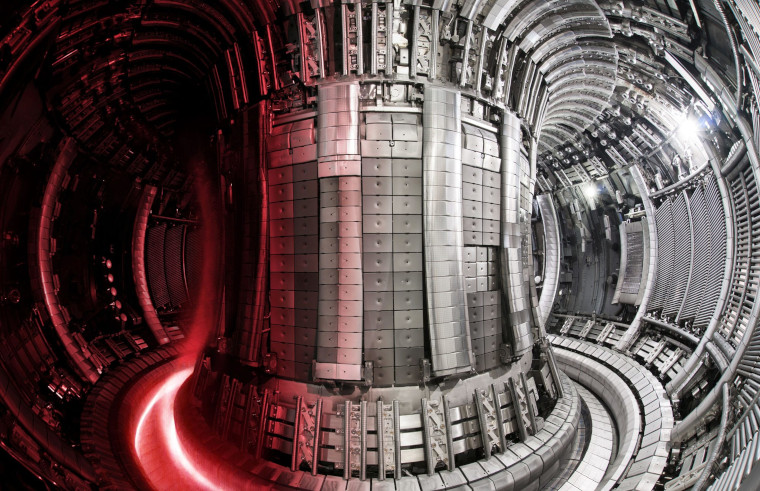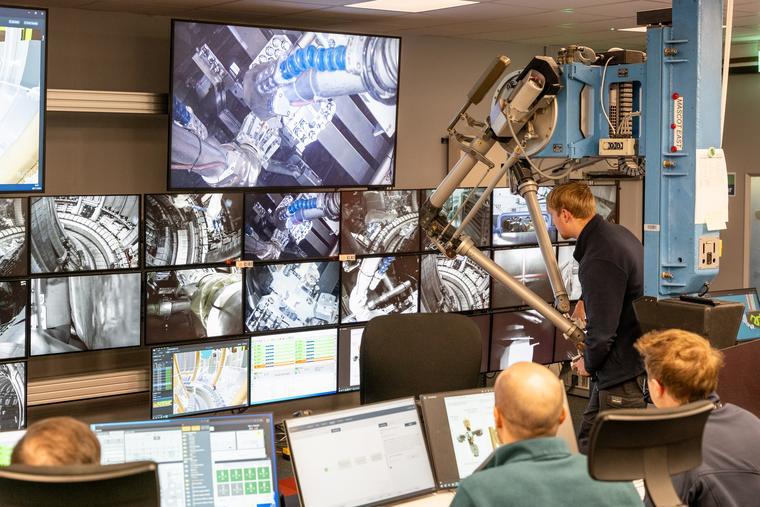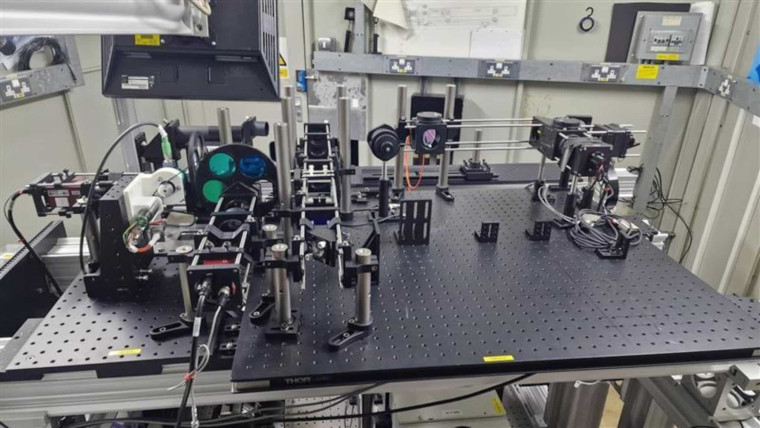Decommissioning
Completing JET’s life cycle, setting a roadmap for future fusion machines and providing opportunities to develop technologies for adjacent sectors.
Fulfilling the UK’s commitment to decommission JET
UKAEA has been instructed to:
- fulfil the UK’s liability for JET decommissioning in a cost-effective manner, using innovative cost-saving methods and reducing nuclear hazard, minimising waste streams and maximising tritium recovery
- develop, implement and prove new technologies to position the UK for future international markets
- repurpose JET facilities for UK science and innovation where there is a clear case to do so
- enable the growth of the fusion cluster by regenerating land released from the JET estate
- retain and build on key UK skills base gained through hosting and operating JET, including within the supply chain

Decommissioning often hits the headlines for time and cost overrun. JDR provides an opportunity to break that cycle, proving technological solutions and innovative concepts which leverage UKAEA’s research and development heritage. Furthermore, decommissioning can capitalise on UKAEA’s world leading expertise in remote handling and tritium management.
JDR must remove hazards and waste and could demonstrate benefits in the broader decommissioning sector, showcasing efficiencies for government and the private sector, and capturing intellectual property.
JDR brings together a rare combination of factors:
- a culture of innovation and adoption, where purpose and direction is aligned
- a relatively small-scale programme where risk and reward calculations are tangible
- relatively few security constraints
- hazards which are challenging but are understood and manageable
- a framework for statutory compliance (regulation) which provides the freedom for innovation to be applied
UKAEA’s approach to decommissioning
UKAEA’s preferred decommissioning strategy includes:
- remote/Robotic dismantling and size reduction of vacuum vessel contents
- detritiation research and intellectual property generation
- reducing the quantity of Intermediate Level Waste requiring transport and storage
- repurposing buildings, facilities and assets for use in fusion programmes, Culham Campus masterplan, and relevant adjacent sectors
The four-axis approach enables the development and implementation of tailored workstream plans to meet each of the challenges being addressed by this world-first programme.
- Outside In (everything outside the torus): Releasing JET’s estate for development; Liberating assets for repurposing, recycling, sale or disposal; Reducing liability within the programme
- Inside Out (the vacuum vessel): Sample Retrieval; Removing tiles, components and vessel furniture; Practical demonstration of Remote Handling capabilities
- Proving Concepts: Intelligent machines; Detritiation and tritium science
- Costs: Reducing fixed costs, eg electricity, insurance, etc; Managing transition costs, eg keeping essential JET systems functioning, staffing, etc
Decommissioning support
Can Decommissioning support your fusion or engineering programme by repurposing a JET asset?
Configuring for success
Moving into the second year of delivery, a matrixed approach to project management is leveraging skills and experience from across the Authority, including JET Subject Matter Experts retained in the newly-formed Decommissioning and Repurposing Division.
JDR has actively sought best practice from numerous locations, including Chapelcross (former nuclear power station in Dumfries and Galloway with a tritium processing plant), AWE, and the Nuclear Decommissioning Authority. These relationships will continue and evolve over time as UKAEA builds its own capabilities and experience.
Long-term remote handling innovation
JET’s Remote Handling System provides the platform for a diverse range of remote handling operations.
The first phase of In-Vessel Decommissioning involves the removal of ~3,000 tiles and components which were installed using the Remote Handling system. This is using tried-and-tested planning and methodology.
For subsequent phases, novel approaches are needed to be able to remotely size reduce large items in the tokamak – such as divertor coils – and to transport them out through the vessel ports. This approach minimises the spread of contamination and keeps people away from hazards, such as tritium and beryllium dust.
Operational capabilities being enhanced include component handling, dust collection, end effector handling and viewing system. New operational capabilities which may be developed include cold cutting, laser cutting and spot welding.
UKAEA will be using in-house expertise to customise ‘off-the-shelf’ products to deliver our specific needs, working with world-leading companies.
Long-term waste strategy
To establish a robust detritiation strategy, JDR needs to establish technical feasibilities, optimise operational parameters, and develop a comprehensive value-for-money assessment of disposal options, covering:
- tritiated water, which must be processed to enable future thermal detritiation
- the tonnes of soft waste (PPE, plastics, etc), which needs to be processed before disposal
- JET’s hard waste, such as Inconel, stainless steel, beryllium and tungsten
Continuing research & development and optioneering to better understand costs and benefits of end-to-end processing is underway.
Intermediate Level Waste storage will be required to bridge the gap between In-Vessel Decommissioning and detritiation processing.
The Active Gas Handling System, used for extracting and processing tritium from JET, will continue to be required for operational purposes until the end of the decommissioning programme.
Showcasing technologies for adjacent sectors
JET’s unique characteristics – a significant engineering facility which is nevertheless small-scale with tangible risk and reward calculations; and hazards which are challenging but also understood and manageable – combine with UKAEA’s culture of innovation and adoption, and a regulatory framework which provides the freedom for innovation to be applied, means that the decommissioning programme is an ideal opportunity to showcase technologies which can be applied in adjacent sectors.
Already this includes:
Laser Induced Breakdown Spectroscopy (LIBS) – This multi-national project involved four EUROfusion laboratories, supported by four more, with UKAEA providing expertise in materials and remote handling. LIBS is a common technology in a laboratory setting, but through the use of bespoke technology, design and training a unit was able to be deployed in a hard environment (such as a tritiated and radiated tokamak) for the first time.
Remote Health Physics System – A lack of Health Physics resources is an issue across multiple sectors. A Remote Health Physics System currently being developed by RAICo can mitigate this issue, remove operators from hazardous areas, and accelerate sample collection. Benefits include increased efficiencies and cost savings. Advancements in this area could offer up-skilling opportunities for existing resource.


